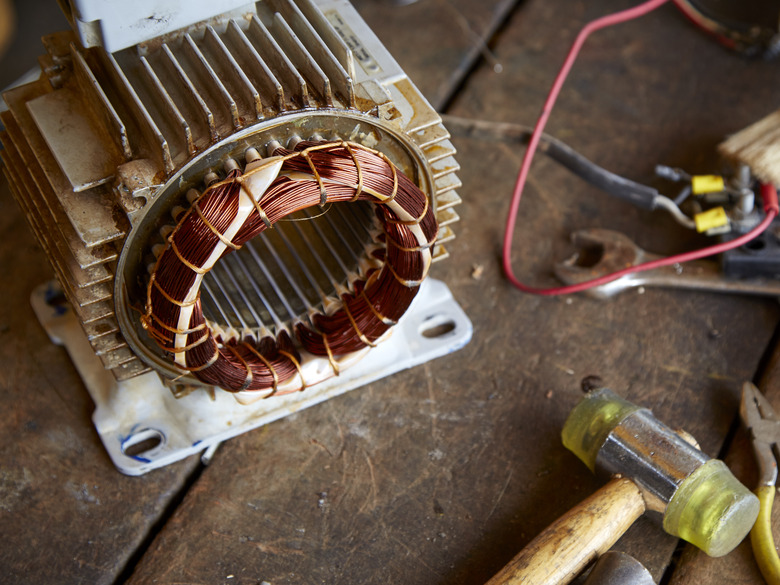What Are The Advantages And Disadvantages Of Electromagnetic Energy Power Sources?
In a typical day, an average person may use electrical power hundreds of times without giving it a second thought. For many people, flicking a switch to turn on a light or plugging an electrical device into a wall socket is second nature. Much of that electricity is supplied by electromechanical devices, such as the electrical generators used by hydroelectric power plants or wind turbines. Electrical power can also be generated by chemical or photoelectric means, such as by using batteries or solar energy. Depending upon the type of electrical power needed, one or more methods of electric power generation may be used simultaneously.
TL;DR (Too Long; Didn't Read)
Electromagnetic sources of power, such as alternators or direct-current generators, use magnetic fields induced across an electric coil to produce electricity. Unless some part of the generation process is inefficient or harmful in some way, it can be advantageous to use such a device to generate electrical power.
Advantages
Advantages
One advantage to using an electromagnetic energy source is that, depending upon the electromechanical device used, you don't need an external electrical source to generate electrical power. One example of this is an alternating-current (AC) generator. When rotational mechanical energy turns a coil inside of the generator, it exposes that coil to changes in magnetic field. Those changes induce the production of alternating current voltage – voltage where the current changes directions with a certain frequency – between the two output ends of the coil. Since no other energy is required other than the mechanical motion of the rotating coil, this type of device can be advantageous in situations where there is a ready source of mechanical energy, such as a steam or gas turbine, or a diesel or gasoline engine.
Another advantage of using an electromagnetic energy source is that you can generate either AC or direct-current (DC) electrical power. As noted before, an AC generator uses changing magnetic fields to create AC electrical power. A DC generator operates in a similar fashion; however, it requires a few extra pieces to convert AC electrical power to DC. Many DC motors and generators use a device called a commutator to convert the alternating current that comes out of the power generator into current that flows in only one direction, or direct current. As with an AC generator, many types of DC generators only require a reliable source of mechanical energy to generate electricity.
Disadvantages
Disadvantages
Electromagnetic power sources may not be as useful, or can perhaps be dangerous to use, under certain circumstances. For instance, if you need to have a power source that must have a regulated current output, both AC and DC power generators would need to be run at a non-varying speed. Further, while a DC power generator produces electrical current that flows in one direction, the electrical current is irregular. To regulate the current produced by a DC generator, you would need additional electrical equipment, such as a battery, a capacitor and an inductor, as well as electronic components called diodes to ensure that the current stays within a regulated range.
Since generators use electromagnetic fields to produce electricity, these fields can be dangerous to some people who use sensitive medical equipment, such as pacemakers. These same electromagnetic fields can also interfere with other electrical and electronic devices, such as cell phones and computers. The electrical energy generation process also produces heat; therefore, it would be best not to use a generator around items or in environments where there is flammable or combustible material.
Cite This Article
MLA
Sandoval, David. "What Are The Advantages And Disadvantages Of Electromagnetic Energy Power Sources?" sciencing.com, https://www.sciencing.com/advantages-electromagnetic-energy-power-sources-6779004/. 23 April 2018.
APA
Sandoval, David. (2018, April 23). What Are The Advantages And Disadvantages Of Electromagnetic Energy Power Sources?. sciencing.com. Retrieved from https://www.sciencing.com/advantages-electromagnetic-energy-power-sources-6779004/
Chicago
Sandoval, David. What Are The Advantages And Disadvantages Of Electromagnetic Energy Power Sources? last modified March 24, 2022. https://www.sciencing.com/advantages-electromagnetic-energy-power-sources-6779004/
